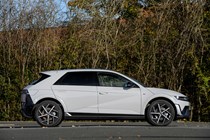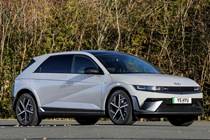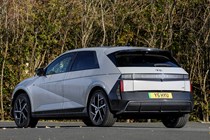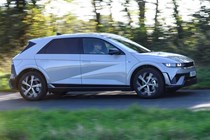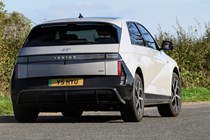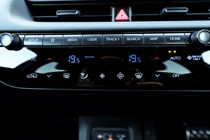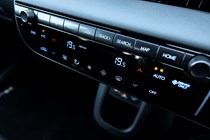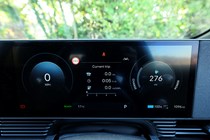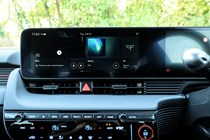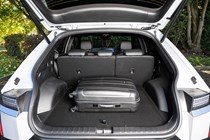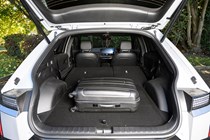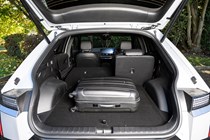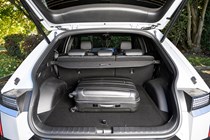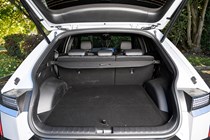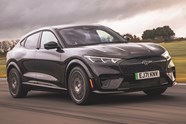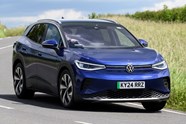
Hyundai Ioniq 5 review
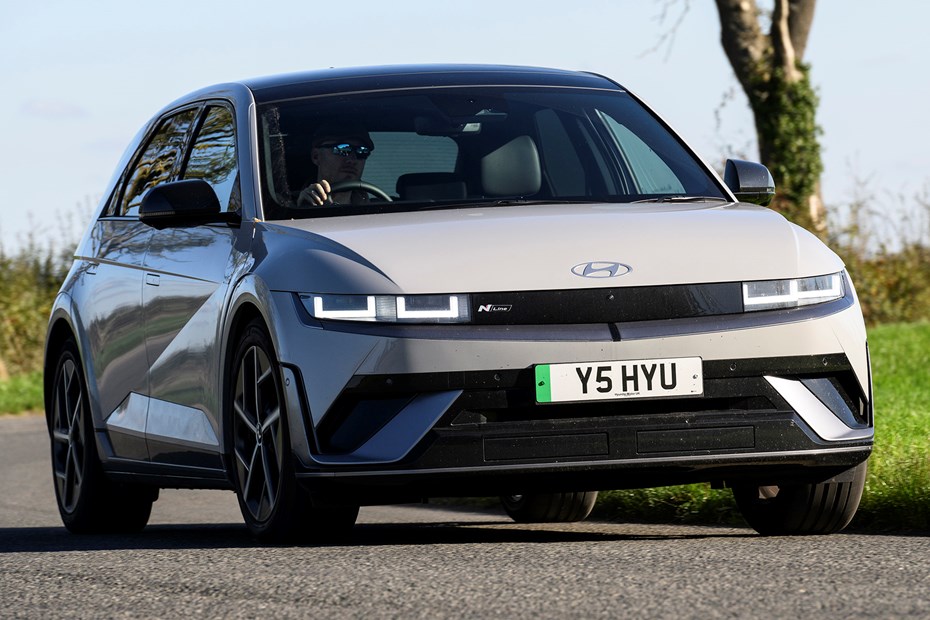
At a glance
| Price new | £39,910 - £57,660 |
|---|---|
| Used prices | £14,360 - £34,632 |
| Road tax cost | £195 - £620 |
| Insurance group | 29 - 41 |
Get an insurance quote with

|
|
| Fuel economy | 3.3 - 4 miles/kWh |
| Range | 238 - 354 miles |
| Miles per pound | 5.2 - 11.8 |
| Number of doors | 5 |
| View full specs for a specific version | |
Available fuel types
Fully electric
Pros & cons
- Roomy for people and luggage
- Good to drive, great to look at
- Long-range version available
- Driving range could be better
- Not as comfortable as some rivals
- It feels bulky on city streets
Hyundai Ioniq 5 SUV rivals
Overview
Thanks to the rise of electric cars, and Hyundai’s decision to go in early with a selection of adanced looking and efficient cars, the firm’s position in the car market has risen from also-ran to pacesetter. The Ioniq 5, launched in 2021, is a good example of this – it’s a desirable family car that usually finds itself on the same shopping lists as the automotive blue-bloods, such as Audi, BMW and Mercedes-Benz.
That’s why the Ioniq 5, whch was designed to rival the Volkswagen ID.3 and VW ID.4, is just as likely to go up against the Audi Q4 E-Tron, BMW iX1, Volvo EX40 and Mercedes-Benz EQA. But time stands still for no one, and after three years turning heads, the Ioniq 5 has received its first facelift. Well, we say facelift, but it’s actually more of a model year update – but these changes are designed to keep it fresh and at the head of the pack.
We’re glad they haven’t changed the way it looks. Hyundai says the design was inspired by the 1970s Pony but, unlike so many car brands looking to its past to guide its future, design-wise, it’s far from retro. Judging by its sales, buyers love the way it looks – the stand out pixelated lighting front and rear and super-crisp lines are still a winner for us, too.
So, the changes are subtle, with new alloy wheel designs, refreshed front and rear bumpers, the welcome addition of a rear wiper and battery pre-conditioning with heat pump is now across the range. The interior remains pretty much as it was with the main visual change being a dark surround for the dashboard screens, but the biggest news is the arrival of a new long-range 84kWh battery pack.
The model range is now made up of the entry-level Advance model, which is supplemented by Premium and Ultimate versions. In addition are the N Line and N Line S models, which hope to capitalise on the halo effect cast by the Parkers-award winning Ioniq 5N. Along with version, we’ve driven several versions extensively in the UK, while our explainer page details how we test cars.
In terms of power options, the Advance and Premium models are offered with the Standard Range 63kWh battery (with a driving range of 273 miles in WLTP testing) and Long Range 84kWh set-up (354 miles WLTP). Maximum power output is 170 and 228hp respectively. The N Line, Ultimate and N Line S variants are also available with four-wheel drive.
Over the next few pages, we’ll take you through the Hyundai Ioniq 5’s high points and low points, through its performance and its charging abilities, look at how well that spacious interior actually functions, and find out whether or not it’s actually any good to drive.



